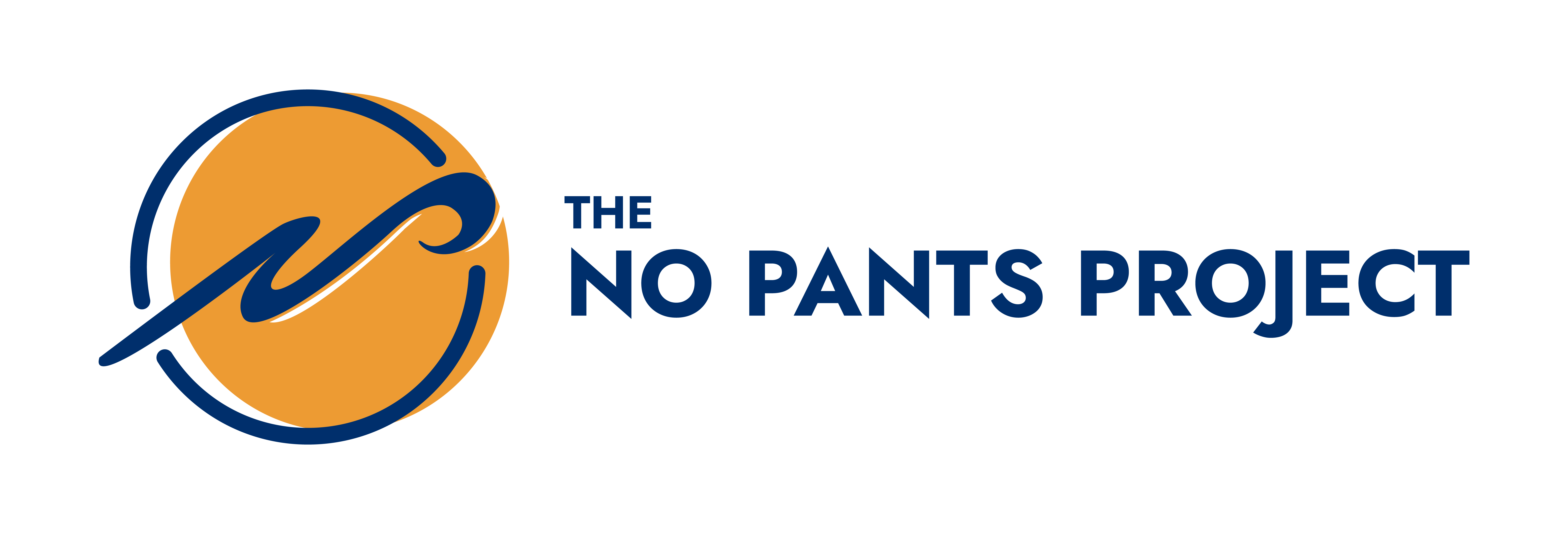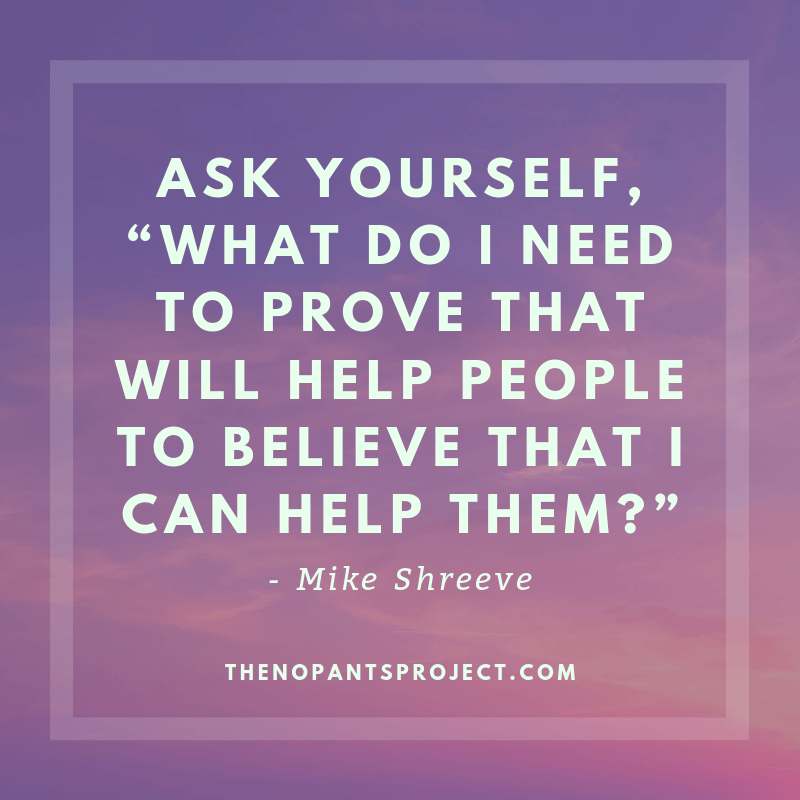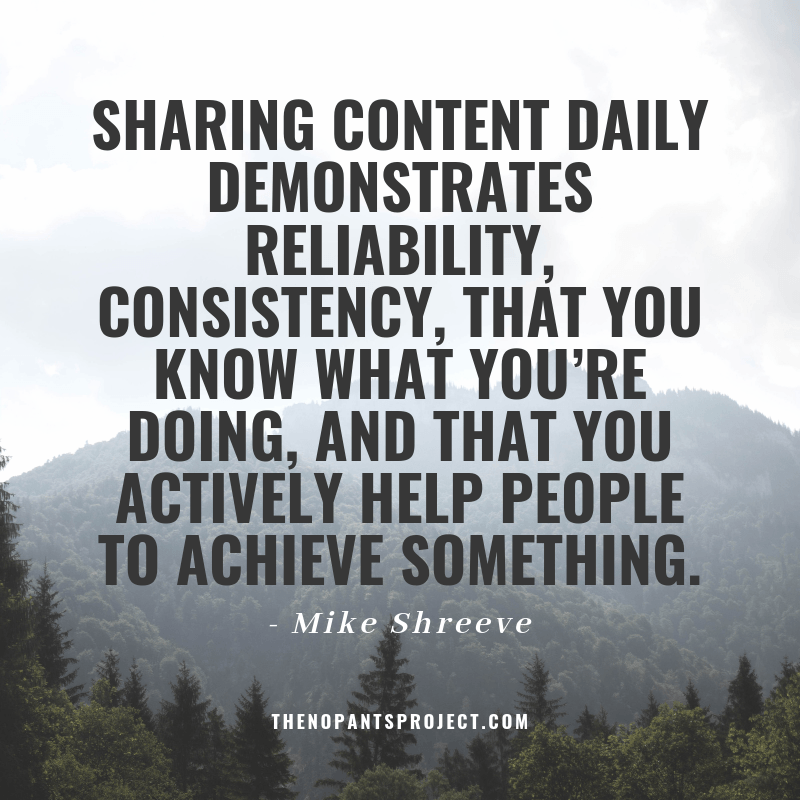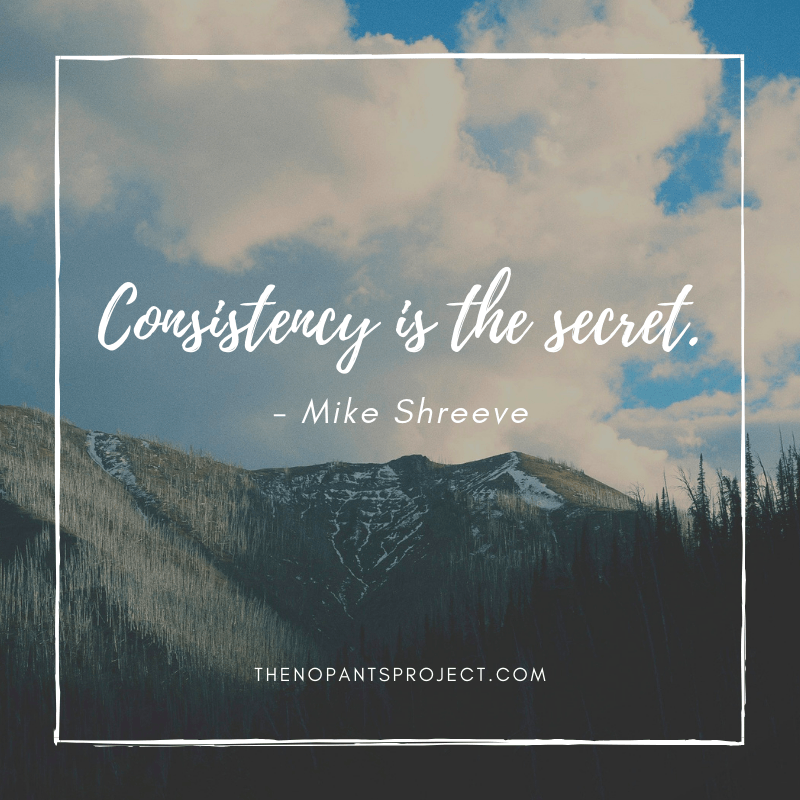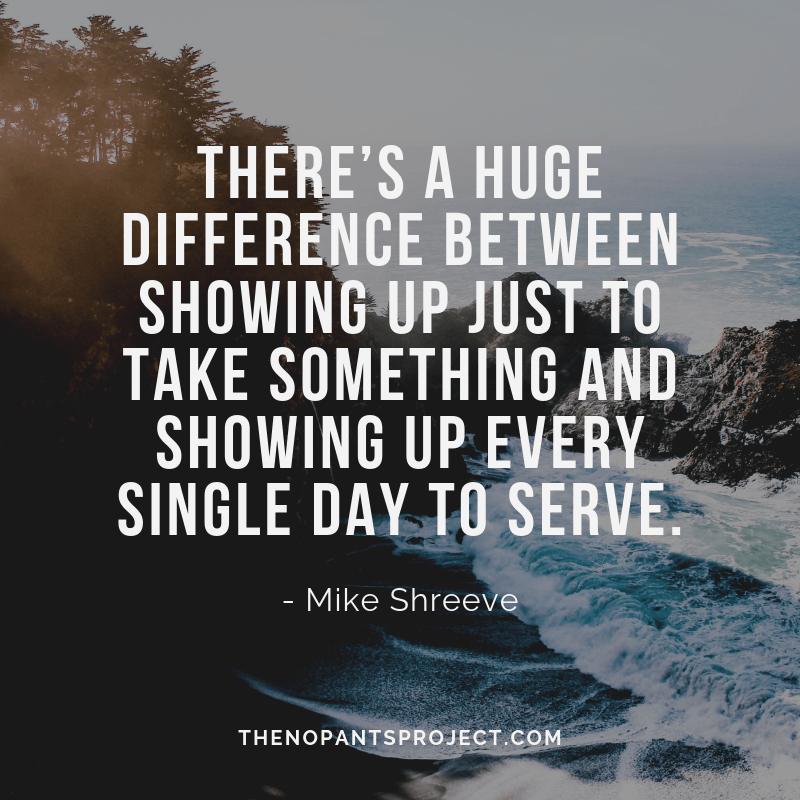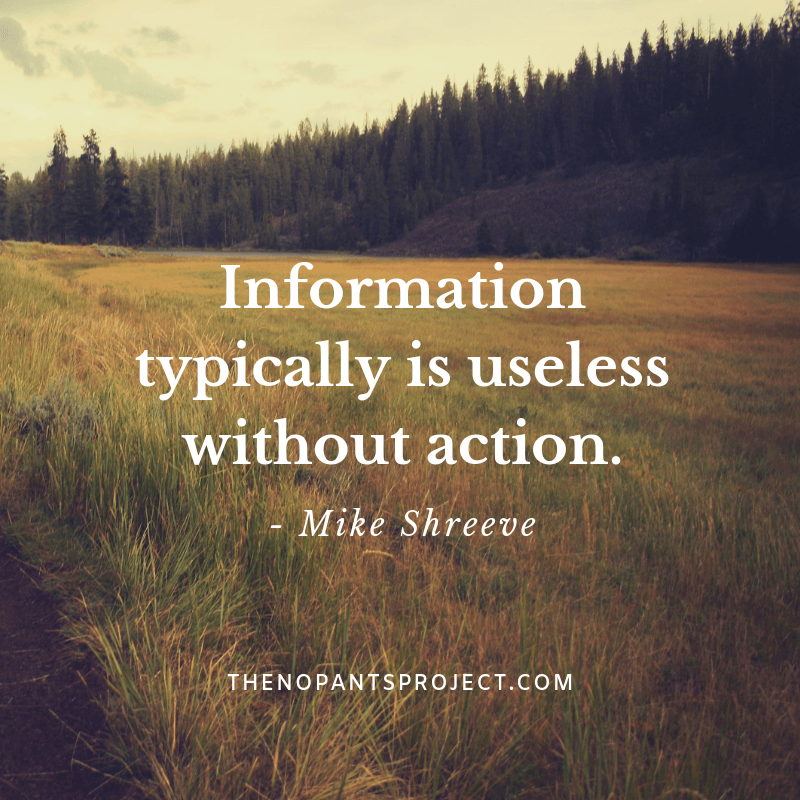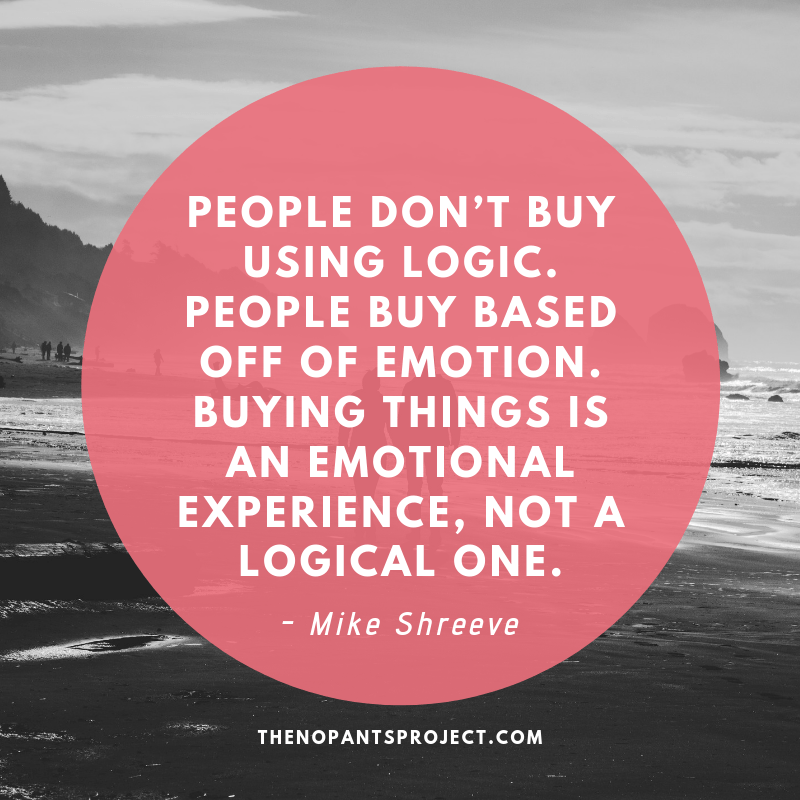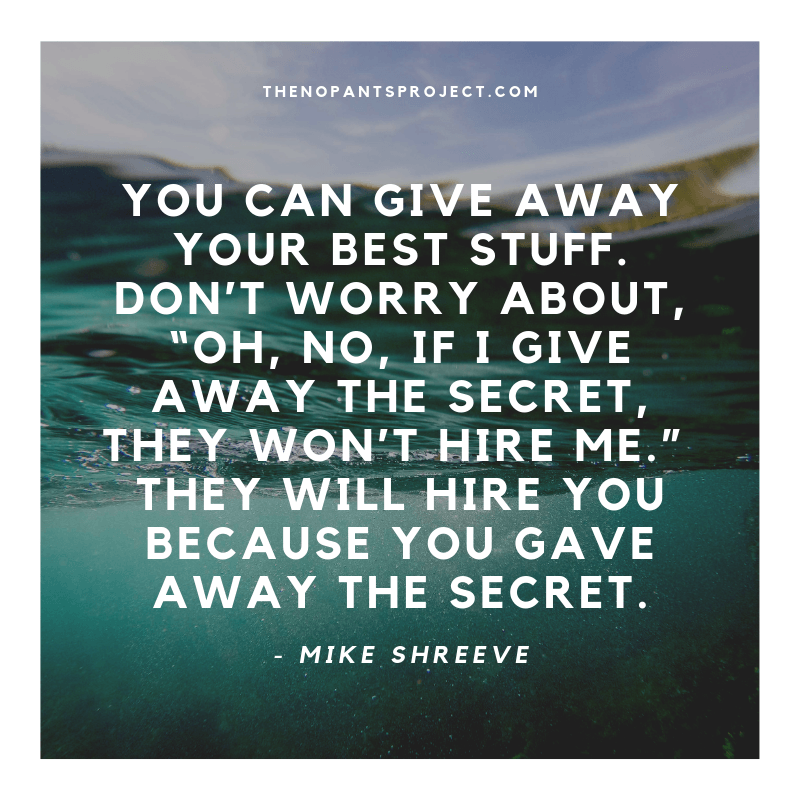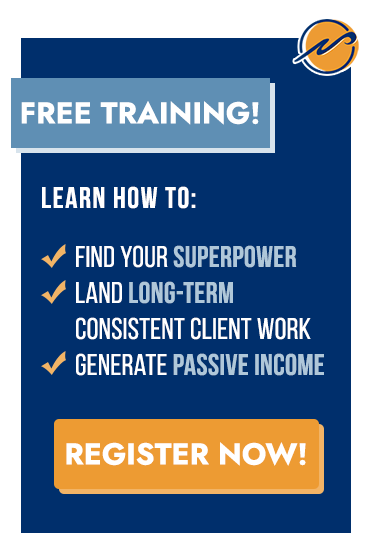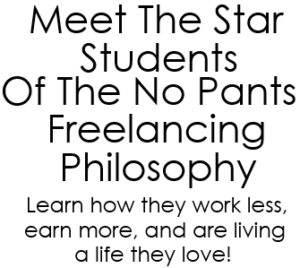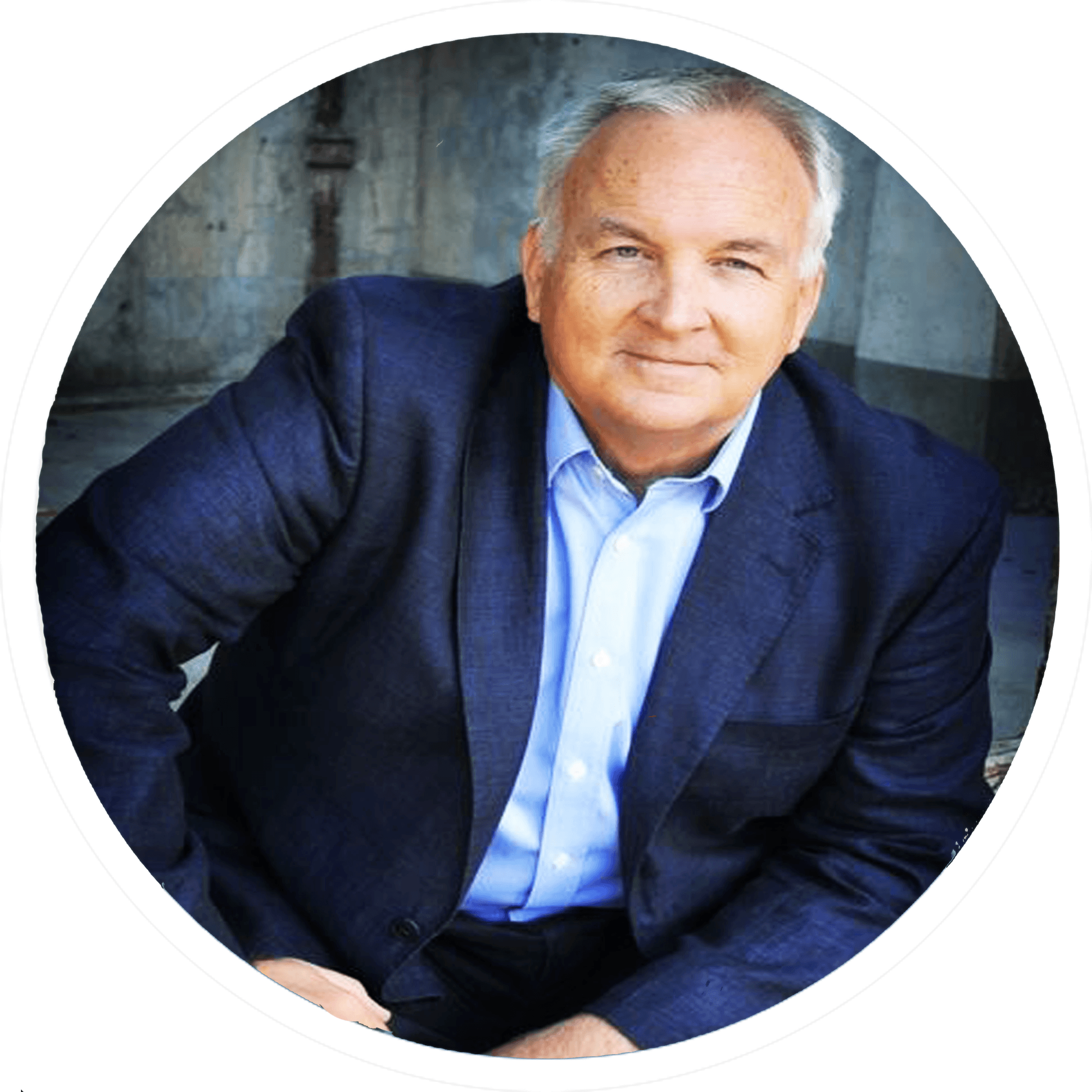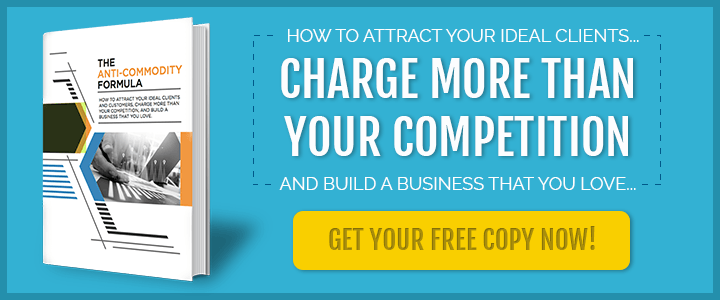Listen to this Podcast:
Listen On Anchor Listen On Spotify Listen On Apple Podcasts Listen On Google Podcasts
SUMMARY
- Many new freelancers seem to be sold on the idea that you have to have the perfect script and say the right things in order to get a client, but turning strangers into clients doesn’t have to be daunting or frustrating.
- The strategies discussed in this video will not only help you automate a lot of what you need to say, but also presell potential clients on your services before you even have an actual conversation with them.
- Communication is not constrained by medium. This means that whatever you need to say on phone calls, you can also say on blog posts, daily emails, and Facebook live videos, just to name a few. You get to choose the medium that best suits your business.
- In order to turn a stranger into a client, you must first understand their burning desire. Your client’s burning desire refers to the gap between where they are now and where they want to be, i.e., all the steps they have to take to get from A to Z.
- Where someone wants to be is different from what they want. For instance, if somebody says they want a lot of money, they don’t actually want the money; they want the life of a person who has a lot of money.
- Once you understand where your client wants to be, you’re able to map out and offer them the things they need to know in order for them to go from where they are now to where they want to be. That’s the stuff you want to communicate in your Facebook videos, blog posts, etc. Keep in mind that the message is more important than the medium.
- As long as you’re not selling information like ebooks, don’t worry about giving away your best stuff. Giving away knowledge actually attracts the right people to you; they will hire you because you gave away the secret.
- Offer both informational and emotional content to build trust with your clients.
- When coming up with ideas for informational content, a good question to ask is, “What do I need to prove that will help people to believe I can help?”
- Emotional content is more important than informational content, because people buy based on emotion, not logic.
- Recommended reading: Poor Charlie’s Almanack: The Wit and Wisdom of Charles T. Munger.
- Where your content is coming from is extremely important in making emotional content. Ask yourself, “Am I creating this piece of content just to show someone how smart I am or to help someone address a big frustration?” Helping solve other people’s problems is not only an emotional experience, it’s also authentic selling.
- Sharing content daily is strongly recommended. It doesn’t have to take that long; you can attract several clients in less than an hour a day.
- The secret to getting clients is the same as the secret to a good relationship: you have to be consistent and put in the work daily.
HOT NEWS & DEALS
- Free Training! The No Pants Workshop
For anyone serious about owning their own successful (yet flexible) business. Learn how to quit your job and leverage your talents to live the ultimate freelancer freedom lifestyle! Register now for this free training to learn the 3-step plan to Full-Time (Profitable) Freelancing. - Free Client-Getting Email Templates For Freelancer Writers!
If you are a freelance writer (or you’d like to be!), download these FREE client-getting email templates. Mike has used these EXACT templates to land monthly retainers for his writing services, get featured in top shelf magazines (as a nobody), and land some of the biggest names in his dream industry as clients without spending a penny in advertising or marketing… - Download ‘The Anti-Commodity Formula’ Workbook!
Learn how to attract your ideal clients and customers, charge more than your competition, and build a business from a home that you love.
INSPIRATIONAL QUOTES
FULL TRANSCRIPT: What To Say That Turns Strangers Into Clients
Welcome to today’s video. We are going to be talking about what to say if you’re trying to attract clients.
Now, first I want to make sure that we’re super clear on what we’re talking about here. There is this idea that when you start your business you have to have the perfect script, that everything has to be done on a single phone call, that if you don’t say the right things, if like you have to get every single word right in order to get a client.
What I want to share with you is actually a way to essentially automate a lot of what you need to say, but also to help clients pre-sell themselves on your services before they ever even get on the phone with you.
Now, some of you may have experienced when trying to get clients, when trying to land deals that it feels… there’s almost like a heaviness to trying to convince them to either pay the services that your, the fees that you’re asking for your service, or to help them understand what it is that you’re doing, or to help them sort of get clear about what the next steps may…
It kind of feels like you have to really drag people through a sales conversation. Well, what I want to teach you here is what you can do before anyone ever even contacts you. And to basically have them sell themselves before, way before you’re even talking about money. Way before they may be even, you have like an actual conversation.
So what we’re going to be talking about here is what you can do consistently on a relatively regular basis if you’re trying to attract clients. And I want to give you some framework, some ideas so that you can remove that sort of sense of heaviness and confusion and frustration that you may feel about how do I turn a stranger into a client?
Communication
So let’s first talk about where to say these things that I’m going to teach you to say. So the first thing that’s very important to understand is that communication is not constrained by medium.
What that means is that you can say this stuff on a phone call, but you can also say this stuff in a blog post on the internet.
You can also say this stuff in an email, in a daily email, in a frequent email. You can also say this stuff in a Facebook Live video like I’m doing right now.
What I’m teaching you, I’m actually doing right now and we’ll sort of deconstruct that process here in a second.
But what it’s important for you to let go of, should this be a blog post or should this be an email or should this be a… It doesn’t necessarily matter at this particular level.
When you get to like the 10/15/20/30 million, you know, Agora did, I think, 1.5 billion dollars last year. When you get to that level, you can break it down and you could be concerned of like, what’s the nuance of an email, versus the nuance of a Facebook Live, versus…
Right now, what I want you to just to focus on is I’m going to be giving you some ideas of content to provide in whatever form you want to provide that in.
Medium
Whatever you’re most comfortable with. If you want to provide that as a blog post and you want to create a blog, that’s fine. If you want to do LinkedIn posts, like literally content that’s specific to LinkedIn.
Maybe you want to do this on medium. Maybe you want to do this… Maybe you have an email list you want to send this type of stuff to your email list every day.
What I’m going to be teaching you today is the communication.
You get to choose the medium. You get to choose what best suits you.
Maybe you want to do Facebook Lives. Maybe you want to do a YouTube channel. All of that still fits within this particular form of communication, these ideas that I’m going to be telling you.
Frequency
What is more important than where you say it is what you are saying and how often you say it. So keep in mind too that what I’m about to teach you, there is an issue here, a frequency.
There’s a reason we do the daily email. There’s a reason why I’m doing daily Facebook Lives, again. Frequency is important and we’ll talk about that.
The first thing that you must understand if you want to turn a stranger into a client is you have to understand their burning desire. And the burning desire as this is common with copywriting, but I want to break it down as simply as possible.
Client’s Burning Desire
Here is what the framework for burning desire looks like. It is where are they now and where do they want to be? That gap between where they are now and where they want to be, that all of the steps they need to take, all of the things they need to go through in order to go from where they are now to where they want to be. That is their burning desire. That’s what the burning desire is made up of. It’s the meat of that thing.
So if you think about your own internal burning desires, say, “Okay, I want to be, I want to have a six pack abs, right? I want to have six pack abs.” That’s where I want to be.
Where I am now is I definitely don’t have six pack abs. I haven’t had those in a long, long, long, long time. You know, I think it was probably 2002 maybe was the last time I had something that looked like a six pack ab.
But I don’t really want the six pack abs, do I? I want what six pack abs gives me. So that’s why we say… That’s why you don’t see on here where they are now and where they, what they want.
Because what people want, they typically try to simplify the complex desires of their hearts and their desires of their world into a single tangible thing.
I want more money. I want six pack abs. But really that’s not what they want. What they want is what somebody who has six pack abs, where they are in life. What they want is somebody who, like if you’re trying to, you know, “I want a bunch of money.”
They don’t actually want the money, they want the life of the person who has a lot of money.
That’s why we say where they are now and where they want to be.
So, if you’re a service provider and you’re working with clients, it’s important for you to understand where does your client want to be? Yeah, they want more traffic. But why?
Where in the mind of your client do they perceive somebody who has a lot of traffic is, right?
So for example, if you were pitching me, I’m just going to use myself as an example. So I’ve got the no pants project program. I want lots and lots of traffic. What I really want from that traffic though are like, I want a big community of people that like what we’re doing. I want sales. I want sales so I can invest more money into the company to deliver a better product than anyone’s ever delivered.
Why?
Because I want success stories. There’s this whole world of they want the traffic and I can help to deliver that traffic, but there’s this whole world of where they want to be beyond just the thing that I’m giving them.
It’s important for you to understand where someone wants to be because once you understand that you reverse engineer and map out, what are all of the things that someone needs to know in order for them to go from where they are now to where they want to be?
That’s the stuff that we’re going to communicate in a Facebook Live, on a blog post, in LinkedIn.
Whatever it is that we’re doing, on a YouTube channel, in a daily email. We narrow it down to just a handful of topics and then we repeat it again, and again, and again, and again.
And we’ll talk about frequency here in a second. Let me give you an example.
So, for the no pants project, which is the core program of the nopantsproject.com one of my companies that I own, where the people that we work with are typically struggling financially as a creative. Maybe they have a business, they’re struggling with clients or maybe they’re just thinking about a business, but they are in a state of financial struggle.
Either they can’t get clients, or they’re not charging enough for clients, or their business just is built so they can’t, you know, they’re not in a comfortable situation.
Where these individuals want to go, or at least the people we want to work with, where they want to go is six figures and beyond doing what they love. That’s where they want to be.
Now, where they manifest that is they want a program on how do I make more clients, or how do I get more clients, or they want a program on how do I start a business?
That’s the difference between what they want and actually where they want to be.
Where they want to end up is they have enough money in the bank, the things are beautiful and they can buy what they want when they want to. They can take care of their family. They can do the things that they want and they actually enjoy what it is that they’re doing.
So I know this, I know that it’s struggling creative to six figures and beyond. What I teach in our daily emails, so high frequency and now that we’re doing the regular Facebook Lives is to get there, first you need to find a superpower, which is all about structuring your offer, figuring out what it is that you sell, making sure it’s a match to the market, making sure that it has the margins and the profit and everything’s there.
That’s the first thing we need to teach you. And then we need to teach you how to scale with automated client getting in case you haven’t caught on yet. That’s exactly what I’m teaching you right now, right? I’m telling you, here’s something you can do to automate your client getting when you just start to create this content and share your message. And then you do it in a high frequency level.
So I’m literally doing to you what I’m teaching you right now. So scale with automated client getting, add passive in… Those are the things that we have to teach to go from struggling financially as a creative six figures and beyond doing what they love. You as a service provider, you have to figure out where is your client right now, your dream client right now, and where do they want to get to, and what are the things that they need to know to go from A to Z?
You simply communicate that in various different lessons and various different…
Again, if you want to do the daily email, if you want to do the YouTube channels, who want to do Facebook Lives like we’re doing, it doesn’t matter the medium. It matters the message.
I could spend a lifetime just talking about these three things. So, don’t think of like, “Oh my gosh, I have to come up with 79 different topics.” Within each of these topics is a hundred plus Facebook Live videos that I could do.
So for example, finding a superpower. This is just off the top of my head. So finding a superpower:
- We got to talk about price.
- We got to talk about picking a niche.
- We got to talk about your dream customer.
- We’ve got to talk about setting, how to ask for the price.
- We got to talk about justifying price.
- We got to talk about and on and on and on.
- We got to talk about a package versus hourly.
- We got to talk about, you know, all of these different things that you would need to know about finding a superpower.
I can make little videos, and little daily emails, and little all of these things. And you know, you might be saying, “Well Mike, aren’t you going to give away the farm for the no pants project program?” Well, no, I’m just giving you information. The program that we sell is about implementation.
So you as a service provider, if you’re not trying to sell information, like trying to sell an E-book, you get to give away your absolute best stuff because what you end up selling at the end of the day is implementation.
Your implementation is done for you.
My implementation in the No Pants Project, the core program that we have is done with you.
I’ve got coaches.
We help you through the process.
We implement the knowledge, but giving away the knowledge that just attracts the right people to you.
People are going to see this video. They’re going to resonate. They’re going to hear me talking about this process and how we work through it, and they’re going to say, “Gosh, I want those results.”
Information typically is useless without action.
So as a service provider, your job is to do the action for someone else. That is what done for you is.
As you know, someone like me who runs the no pants project, I also do my own freelancing but I run the No Pants Project, our, what we sell to people is implementation.
It’s just a different form of implementation because
- there’s done with you,
- there’s done for you and
- there’s do it yourself implementation
So you can give away your best stuff. So don’t worry about, “Oh no, if I give away the secret, they won’t hire me.” They will hire you because you gave away the secret.
Now, once you have that structure in place and you’re clear about sort of the journey that you need to take someone on, once you have that content structure in place and you’ve mapped it out, and I highly recommend that you do map it out, there are two things that you need to make sure are part of your content.
Again, however you create it, there are
2 Things That Will Lead Someone To Trust:
1. Information
The first is the information. It’s the how-to.
It’s the, I just gave you a content framework.
Now you go use that content framework.
You implement that content framework. Now you say, “Oh my Gosh Mike was right. It actually worked.” That’s the easy part. Just come a list of you know, seven things that you need to know about, attracting a client.
And if you’re struggling with sort of coming up with what information do I need to provide, ask yourself this question, “What do I need to prove that will help people to believe that I can help them?”
So in this video, again, let me tell you what I’m doing. As I’m doing it to you, I need to prove to you that you can easily come up with things to say and if I can do that, you will believe that I can help you in other aspects.
So if you are watching this video and you’re like, “Oh my gosh, I think I kind of like, I have some ideas here that I could use to make some content. So maybe I’ll do it on LinkedIn or maybe I’ll do it on YouTube. I don’t really know right now, but I’m starting to feel like, ‘Man, Mike is actually helping me right now just on this free content. His concepts are proven in that I’m having breakthroughs. Oh my gosh. I think Mike is the person who can help me with growing my business.’”
That’s one aspect of trust.
What do you need to prove? What do you need to demonstrate that will help people to believe that you can help them? All right. That’s the first part. So the informational content is important.
2. Emotional Content
The second piece, which is more important than informational is the emotional content because people don’t buy using logic.
People buy based off of emotion.
And this is in, I mean, buying a car is an emotional experience. Buying something from someone like me is an emotional experience.
I mean someone like me, meaning like a consultant or somebody who offers programs, that’s an emotional… Buying things is an emotional experience, not a logical one.
And as a matter of fact, I’ve been reading this book recently, hold on one second.
I’ve been reading this book recently. It’s the Poor Charlie’s Almanack. It’s The Wit and Wisdom of Charles T. Munger who is the business partner of Warren Buffet.
One of the things that people say about Charlie, Charlie, Charles, I don’t know if I’m friends enough to call him Charlie. But The Wit and Wisdom of Charles. One of the things that people say about him in this book is that he was an extremely logical person, more logical than anyone had really ever met before.
And when you look at his behaviors of how he worked with money, what he would do to buy stuff, et cetera, just like if you just studied his buying behavior and then compared it to your own, you’d be like, “Oh yeah, I’m actually really emotional about what I spend my money on.”
Because when you compare it to somebody who actually is like ultra-logical about making purchases, like an investor like that, you’ll soon see that most people, 99% of people, they have very strong emotional components in how they purchase.
Now, how do we extract emotional content? Well, the thing is, is that it’s about where your content is coming from, right? So, am I creating this piece of content just to show someone how smart I am, or am I addressing this, or am I creating this piece of content to help someone to address a huge frustration?
So for example, this video is created because I know that a big frustration in my community is, what do I say to attract the right kind of client? And I know it’s a frustrating thing. And the frustration is, “Oh gosh, I don’t know. I feel like I’m just pulling things out of thin air. It doesn’t feel like… When somebody shows up on a call, I feel like I have to drag them through. Like what are the frustrations that they’re experiencing? I don’t know what to say. I feel like I have to be an expert. I’m not an expert. I don’t know where to put myself.”
Like all of these things are frustrations that my people experience and that’s why this video exists. I’m not trying to show you how smart I am. I’m trying to address a frustration that you might have that is an emotional experience.
A logical experience is that I stand up in front of a classroom like a college and I do math equations on the board. And I don’t care what the students in my class are thinking or feeling. I create lessons based off of what’s in the textbook.
An emotional piece of content is, “Okay, what problem can I solve? What frustration are they experiencing? What can I teach them that will help them to overcome that? What fears do you have? A lot of people are, “I’m afraid of getting on the phone with a client and having to sell them using hardcore sales tactics because I’m not a salesperson.’”
Great. This video is about making sure that someone’s sold before they even get on the phone with you.
So, this is me addressing a fear that people have about the sales process.
Here’s the big one.
What’s the nasty internal talk that’s going on inside of the head of your dream client?
So for the No Pants Project, it’s this self-doubt that people have about, “Can I really get a client? Is getting clients a real thing? Do people actually make money? I don’t know if they make money. I don’t think I could do it. I think maybe only certain types of people who like to be in front of the audience or certain types of people who have some magic mystical power, but not me. I can’t do it.”
Again, this piece of content was built specifically to help address certain internal talk that people have about getting clients.
This is authentic selling because I’m addressing those fears that’s building trust in individuals and someone’s going to watch this video and they’re going to purchase, if not the happy writer program, the No Pants Project Program, they’re going to purchase something from me because this is a piece of content that was created emotionally. It was created to address something specific.
Okay my dear friends. So very quick recap.
First, you need to create, figure out the burning desire of your dream client. Figure out where they are now and where they want to be. Figure out the steps that they need to take to go from where they are to where they want to be then share content as frequently as possible.
I recommend daily if you can. It doesn’t take that long. This is only going to take me about 30 minutes of my day to create this particular piece of content.
I write daily emails. Daily emails only take me about 15 to 20 minutes a day. So under an hour a day you can attract as many clients as you’ll possibly ever need.
We are scaling our business to a mid to high seven figures, just doing two forms of this kind of content sharing.
Once you have that content structure and you know sort of and you start listing off some ideas about where you want to, what you want to share, make sure that it contains two important elements, the actual information.
So what you need to prove to someone that will allow them to think that you can actually help him.
And then the second is the emotional content where their fears, frustrations, what’s going on in their head.
Now, I want you to go implement this, but let me give you the million dollar secret and this is actually is a million dollar secret because we proved it in the past year, earning a million dollars just implementing just this idea on just daily email.
Daily is the secret.
Consistency is the secret and here’s why. If the purpose of this content of the stuff that you’re saying in whatever form, whether you write it down, whether you do whatever, the secret to this process is the same secret to a good relationship.
If you are in a relationship where the person only shows up when they want something, we have names for that in our society. Booty call. Mooching. A farewell by their friend. Like we have negative connotations around people who only show up when they want something. Daily, consistent application of sharing messages like this is about basic human behavior and the process of trust that is built over time.
So if you want people to come to your sales process, whatever that process is, whether it’s a phone call, whether they’re emailing you, if you want them to come to your process already trusting you as someone who is reliable, as someone who they can hand something off to and not have to micromanage.
If you want someone to come to you and say, “I love what you’re doing, can you just do that for me? How much does it cost?” And that’s the sales process that you want.
Daily is how you get there because daily demonstrates reliability. It demonstrates consistency. It demonstrates that you know what you’re doing and that you actively help people to achieve something, whatever that is.
Now, with that in mind, remember that it doesn’t have to be 30 minute pieces of content.
A huge example of somebody who does this daily sharing, who does this exact process – Seth Godin. Seth Godin, every single day. The Daily Stoic by Ryan Holiday, every single day.
And if you look at their content, it’s not this huge long form stuff.
There’s a specific reason I’m going long form and maybe in a different video I’ll share what that reason is. It has to do with who we’re targeting specifically and sort of the business model that we’re running.
But if you’re a service provider, it doesn’t have to be this ultra-long… James Altucher, every single day does a blog post. I don’t know if he still does that, but he used to do.
People who consistently publish tend to attract the most attention because there’s a huge difference between showing up just to take something and showing up every single day to serve, but it doesn’t need to be 45 minute videos.
It doesn’t need to be thousand word emails. It can be little. It could even be… Look, here’s how easy it can be.
You could go to Twitter and share tweets every single day as long as every single day, the information… what you’re sharing is informational and emotional, as those two components and it helps people go from where they’re at to where they want to be along those few points that you’ve outlined is the process that they need to go through.
If you can do that and you can do it consistently, it doesn’t matter what channel, it doesn’t matter what medium. Totally up to you. You don’t need to be Gary Vaynerchuk and doing it on 50 different mediums.
I’ve made more than a million dollars a year just doing emails. This is only the second channel I’ve ever… So this Facebook Live thing that we’re doing now, this is really only the… I’ve ever gone outside of daily emails.
So you don’t need, you know, for what most of us are trying to do. We’re not trying to buy the New York jets, we’re just trying to make a decent living and have some fun.
You don’t need to have, you know, be on Snapchat and Instagram and YouTube, and everything.
Besides, you don’t have a team of 300 people like Gary Vaynerchuk has.
So you can still take this same idea and just slow, consistent, set aside 20, 30 minutes a day and start sharing this kind of stuff. I promise that if you do that you will, in fact, get clients. And they will be pre-sold, which is the absolute best way to do that.
